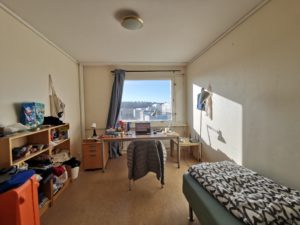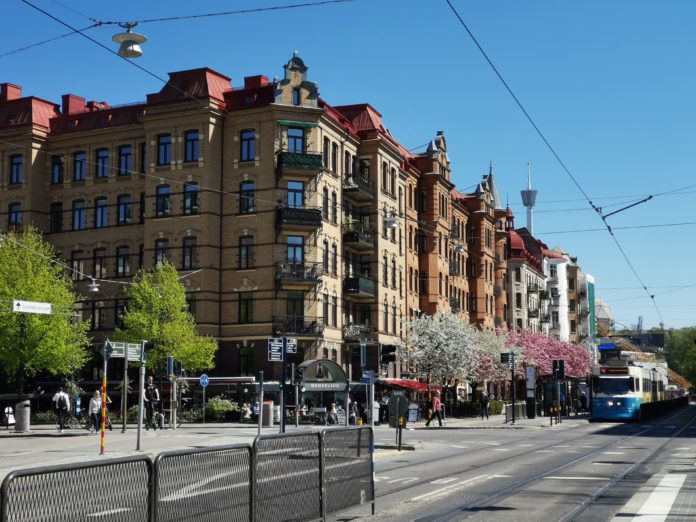I had a txt file full of bullet points prepared with little tips and (not-so-pleasant) lessons I have learnt during my time exchanging in Chalmers University, but it seems like my fellow Chalmerists have already covered many of them in their own comprehensive guides:
- Tips and facts you should know before moving to Gothenburg, Sweden
- What to expect at Chalmers: A Guide
- Exploring the Attractions in Gothenburg
- Embracing School Life at Chalmers University
- Survival Tips in Gothenburg
Thankfully for me, there was one crucial aspect that these guides have missed out on, and that is: pre-trip tips! So here is your guide to preparing for going on your exchange to Gothenburg, Sweden 🙂
1. Student Residence Permit
It is advisable to apply for your Student Residence Permit ASAP once you have received the confirmation email from Chalmers University that you have been successfully admitted into their exchange program. From our experience, the email came pretty close to the time we would leave, and left us with only a few weeks to settle all pre-trip administrative matters. Additionally, you never know how long the processing might take, so it is always good to apply as early as you can. This can be done online through this link. If you’ve clicked on the link, you might notice that there is one particular document that might be more troublesome to obtain, and that is the Proof of Financial Standing document that you would have to get from your bank. From my experience, I had to pay my bank (DBS) an admin fee in order for them to produce this document. I also applied online and it took roughly a week for the document to be mailed to me. It is slow, expensive, and not recommended. Instead, you might want to head down to your bank’s nearest physical branch and ask for a bank balance enquiry, which they might be able to get done for you, more quickly and for free. This worked for some of us. DSBJ. But if you’re only reading this guide after you’ve screwed up like me, welcome to the club 😔. Anyway, once the online processing is complete, you would get an email from the Swedish Migration Agency asking you to make an appointment to visit the Swedish Embassy in Singapore before they can approve your application. You can then choose to do your biometrics there for them to make your residence card, or to wait until you’ve arrived in Gothenburg to do so. According to them, the card would take around 2 weeks to arrive (as it will be made in Sweden), so do plan wisely. Since I would be flying in 2 weeks, I chose the latter to be safe and took my biometrics in the Swedish Migration Agency’s Gothenburg branch. The process was pretty smooth and straightforward, and you can choose for them to mail the card to your student residence or to collect it personally after about a week. This card acts as your student visa, and is necessary for you to travel in and out of Sweden during your exchange period, especially after your 3 month visitor’s visa is up. Other than that, it doesn’t really serve any other function so just remember to take it with you when you’re travelling.
2. Things you might want to bring there or be prepared to purchase on your first day moving into student housing

This section speaks solely from my experience moving into the SGS Ostkupan student accommodation so you might wanna check in detail about what your particular student accommodation provides/does not provide before making any purchases. But nonetheless a reminder to check thoroughly before you arrive so as to not get a shock.
a) Bed stuff. Like the usual student accommodations, Ostkupan merely provides a mattress on a bedframe. So you might want to make plans on your first day there to head down to IKEA (which is not near the city center by the way, don’t be fooled), or any other store that might sell what you need in order to make your student accommodations a livable space for at least your first few nights. Alternatively you can bring some stuff over like bedsheets, or even pillows (I brought mine because it’s thin and doesn’t take up too much space in my luggage) and blankets. Although I would recommend actually purchasing a comforter at IKEA as it can get cold during the winter (Ostkupan’s heating system can be pretty mid, depending on your luck) so do plan according to your needs. Oh, and Ostkupan can be kinda shabby (cleanliness wise) when you move in, so I also purchased a mattress protector to protect me (not the mattress, LOL) from the nasty stuff in/on the mattress. Again, it’s pretty luck dependent but this was just my own experience.
b) A router. I think this varies from student accoms to student accoms, but Ostkupan does not provide readily usable WiFi in your rooms. We did not know this when we arrived and kind of got a shock so this shall serve as a heads up for anyone who might be moving into student accommodations in Sweden. Ostkupan provides internet in the form of 2 ethernet ports (my room had cables too but I’m not sure if that’s standard practice, or just leftover from previous tenants), and you would have to purchase (or bring!) your own router and register your account with SGS online before you can have WiFi in your room. Alternatively, you can be thickskinned and flex your social prowess by asking your neighbors if you could hitch on their WiFis (which one of us did do! and succeeded! so to each their own). In any case, just make sure to check properly what your student accommodations provide so that you are prepared when you get there.
c) Cooking apparatus. Be prepared to purchase cooking apparatus once you are there as eating out can be pretty pricey. It is also good to communicate with your fellow SUTD Chalmerists if you are staying close to each other to share your cooking apparatus and even cook together. You might be able to bring some stuff over, like a mini-cooker (I think my Chinese neighbor in Ostkupan even brought his own rice cooker from China), but it can be pretty bulky so maybe it would be better to just share the cost with each other and buy your apparatus when you are there. You can try your luck and check out the Olofshojd freeshop (more details can be found via @freeshop_olofshojd on Instagram), where there might be pots and pans available for you to take for free, but from our experience, the stuff there are quite rabak (maybe because we went after the good stuff were already taken) so we just bought new ones. You can also check out Facebook Marketplace to purchase some stuff secondhand. It’s not Carousell but it does the job (that’s where we bought our rice cooker!). If you want brand new stuff though, I think IKEA would be your most affordable bet, and that’s where we got most of our stuff from. Again, some student accommodations might already have cooking apparatus for you to use, but just check on your first day and make your purchases accordingly.
d) Stationery and other stuff for your studies. You’re on exchange to study and learn! Remember to bring pens & paper & your calculator, because at some point you will probably need them. Some of us seemed to have been overly excited for the fun that exchanging in Europe entails (*cough* cheap travels *cough*) and totally overlooked their studying needs when packing to come over. So this is your reminder not to make the same mistake 😉
Of course there are other things that you might need for day-to-day living which are not included in this list. This list just seeks to provide some guidance on a few of the more important things that you would need, at least for your first few days in Gothenburg.
3. Payment/Currency
As some of the other guides have already pointed out, Sweden is a highly cashless society. Living there for 5 months, we did not encounter a single place where they would only accept cash. On the contrary, most places only accept card payments and turn away cash. Hence, you should equip yourself with a YouTrip/Revolut card before going over, in order to make payments for all your purchases there. If you do not already have any of these, do apply for an account (& card) early as physical cards like YouTrip might take a couple of weeks to be mailed to you. I used YouTrip while I was there, which worked well, but I would recommend Revolut as many other Europeans have Revolut accounts and it would be more convenient to transfer money to your new European friends when you are there if you have a Revolut account. Because Sweden is so cashless, take this as your warning not to convert and bring too much Swedish Krona over, as you might struggle to use them up. Probably 100/200 SGD worth for the highly unlikely event that your card fails would be more than enough. Instead, if you are planning to travel (who isn’t!), do remember to bring some Euros with you as some other European countries like Germany might not be as cashless and you might find yourself having trouble paying for stuff without Euros on hand. But still, do not be overzealous and bring too much as most places do still accept card payments. 300 Euros would probably be way more than enough.
And with that, we have come to the end of the list. It was quite a short one, but hopefully still provides some insights that are helpful for your own preparations to exchange in Gothenburg, Sweden. Stay safe and have fun!






























